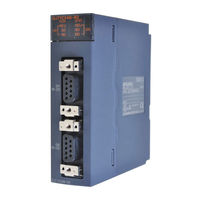User Manuals: Mitsubishi SW0D5C-QSCU-E Controller
Manuals and User Guides for Mitsubishi SW0D5C-QSCU-E Controller. We have 1 Mitsubishi SW0D5C-QSCU-E Controller manual available for free PDF download: User Manual
Mitsubishi SW0D5C-QSCU-E User Manual (358 pages)
Melsec System Q Programmable Logic Controllers, Serial Communication Modules GX Configurator-SC
Brand: Mitsubishi
|
Category: Controller
|
Size: 4 MB
Table of Contents
Advertisement
